Mica powder can be a fantastic option for printing, giving the shimmer that regular pigments can’t. Utilizing mica in your prints encourages artistic experimentation and enhances creativity.
Mica is a pliable material that is able to split into sheets along its Cleavage planes. Mica is also known as dressed The sheets are graded based on clarity, size and transparency. They are also free from stains or spots.
History
The micas belong to the orthosilicates group. They include alkalis, aluminium basic hydrogen, as well as for some species like the phlogopite (biotite), biotite and lepidomelane, magnesium and chromium. They are generally transparent and colorless, but they are available in a variety of colours such as green, yellow and brown. They also come in black. Their cleavage surfaces are often shiny, however they are bad conductors of electricity.
Mica engravers have employed an iron tool that is shaped like a wedge called a burin make sharp, clear lines into the surface of mica. The technique appears to have come from goldsmithing. Two of the first masters, Martin Schongauer and Albrecht Durer, both had parents who were goldsmiths. In Italy the engraved mica was one of niello plates, which were small engravings of gold or silver that were filled with an opaque substance to shade the design.

Ani Lenhart made these drawings onto mica while being held captive by the Nazis in Theresienstadt the concentration camp and ghetto that was originally known as Terezin. They had her as an employee of the forced labour force, splitting mica that had been extracted from the area.
Mica Art Techniques
Mica is a flexible mineral made of silicates that can easily be separated into thin, flexible plates. This property is called the perfect basal separation. Since the beginning of civilization the artists have employed mica in their art due to its distinctiveness.
Mica is a plethora of material that can be utilized for various projects. From making alcohol inks that shimmer to painting glass, you can apply it in numerous ways. Mica powder is a fantastic dye for alcohol inks. It provides an intense, deep colour that is easy to apply in a variety of ways.
Mica is also used in epoxy resin, to create pearlescent and metallic effects. This is a quick and enjoyable method to add some sparkle to resin projects, such as ink pens and river tables. For best outcomes, mica should be mixed with a small amount of oil from linseed prior to adding it to the resin. This will reduce the risk of inconsistent results, as well as increases the accuracy of designs engraved. Mica is also a good pigment for a variety of glass techniques, including printing and glass etching.
Ancient Mica Use in Art
Mica, a material that shimmers in nature, provides an interesting texture to paints or other media. This material is particularly useful in printmaking, as it lets artists experiment with various aesthetics. Standard pigments cannot compare to this.
Mica is utilized in art for a long time and its unique beauty has lasted. From the earliest Hindu paintings to modern nail polishes Mica has been discovered in a wide variety of cultural artifacts.
Ancient Hindus believed mica crystals preserved lightning flashes. It is because of this that mica was used as the surface of mythological art. The beautiful mineral is recognized for its glittering qualities making it the perfect choice to portray gods as well as other celestial beings.
In India the use of mica was to create a kind of painting referred to as”Company” painting “Company” painting that was developed for the European market during the 19th century. The paintings depicted Indian lifestyles and cultures unaffected by Western influences, providing an uncommon insight into the daily lives of the ordinary people of India in the era of.
Traditional Mica Crafts
Mica is a favorite option for printmakers as it imparts a shimmering appearance to their work. It’s a great alternative to pigmented powders which appear matte and are more likely to lighten when mixed with water or paint. Mica adds a more metallic look and comes in many shades which can be used to highlight particular areas of a print or painting.
It is possible to melt mica, and shape it into sheets for lamps, beads and other decorative crafts. Decorative mica is easily molded by evenly heating the material for a couple of minutes and then molding it onto a casting or form. It is also easy to cut using heavy shears, the band saw, or scroll saw.
In the home decor industry, mica is often added to beeswax natural to create creating gilding. This technique is great to highlight intricate carvings and mouldings on projects to refinish furniture.
Many of the companies involved in the mica manufacturing industry are now focused on responsible mica purchasing. This is a shift towards a supply chain that is free from child labour. Many of these companies are marketing their mica-based products, with the aim of encouraging customers to choose those that are made ethically.
Mica Sheet Etching
Mica sheets are utilized in a variety of manufacturing processes, ranging from household appliances to automobiles. They are particularly useful for window panes, serving as a clear barrier against dust, debris and weather, as well as providing clear view.
The unique, flat, six-sided monoclinic mica crystal structure allows the mineral to be cut into flat optical films that are strong and elastic, while still being tough and durable. The mica sheets are available in square or rectangular dimensions that range from 2.4m. They can also be made into custom shapes. The sheets of rigid mica are usually composed of pure muscovite or phlogopite both with outstanding thermal and gia cong chu noi quang cao dielectric properties.
The surfaces of muscovite that has been freshly cleaved are crystal clear and free of fingerprints and incredibly clear. They are therefore perfect for high-resolution microscope studies, particle imaging, and cell development.
